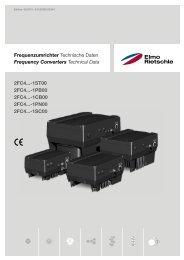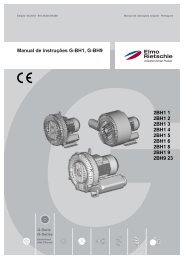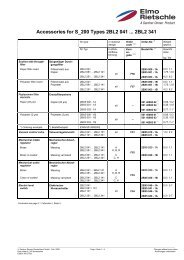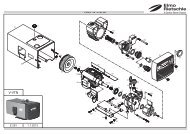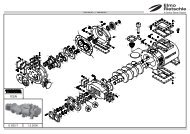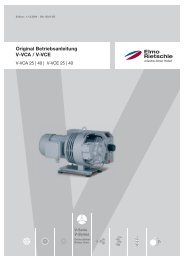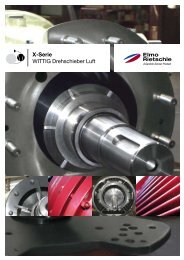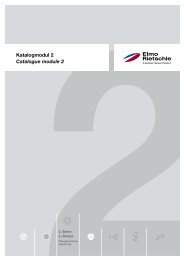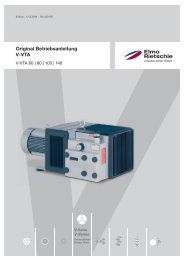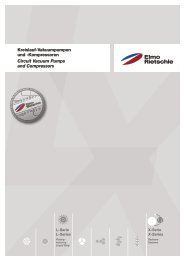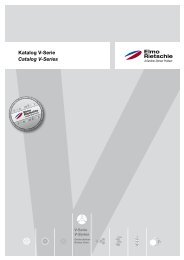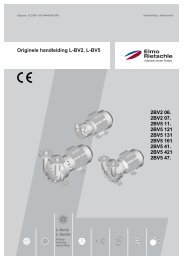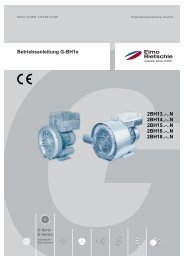newsletter - Elmo Rietschle
newsletter - Elmo Rietschle
newsletter - Elmo Rietschle
Create successful ePaper yourself
Turn your PDF publications into a flip-book with our unique Google optimized e-Paper software.
Material for the stands<br />
Pre-cut for the stands<br />
Apprentices from the Schopfheim trainin<br />
Major projects are currently under way<br />
in our training department. This means<br />
that several projects are concentrated<br />
in one major project. All the projects are<br />
set up in Johann-Sutter-Straße in Schopfheim<br />
(assembly for two-shaft machines).<br />
The apprentices currently in the training<br />
department are all involved in this work.<br />
• 6 tool cars<br />
• 2 spray booths<br />
• 12 tote box pallets<br />
• 8 tables for ZEPHYR machines<br />
• 8 mounting devices for<br />
assembling ZEPHYR machines<br />
Here, for example, is one of the projects, the<br />
assembly jig. Conducting a project of this type<br />
has been a huge challenge. Several assembly<br />
jigs have already been planned and also produced<br />
here in the training department. These<br />
projects must of course also be approved by<br />
the management. It all takes a long time –<br />
starting with an idea, then through the planning<br />
stage to completion. We had to make plans,<br />
produce drawings on our CAD system, look<br />
for a helical geared brake motor in a catalog<br />
to move and „hold“ a weight of 600 kg. And<br />
not to forget, the accident prevention and<br />
occupational safety regulations for these<br />
devices and their operators. Our treacher<br />
Mr. Trinler regularly reminds us of these and<br />
naturally gives us relevant training. We were<br />
then able to order the required parts through<br />
the Purchase Division with the respective<br />
project number. These included steel plates,<br />
steel shafts, thrust bearings, grooved ball<br />
bearings, square pipes, a frequency converter,<br />
a switch box for operation, electrodes,<br />
grinding wheels, screws, nuts, etc.<br />
Once our orders had arrived we commenced<br />
with production. We pierced, turned, milled,<br />
welded, drilled, rubbed, screwed, pinned,<br />
mounted and tested the steel plates. The electrical<br />
components were naturally produced<br />
by our electricians. After everything had been<br />
tested and accepted, the machine was painted<br />
in the paint shop and then erected at its place<br />
of destination in the displacer assembly plant<br />
in Johann-Sutter-Straße in Schopfheim.



